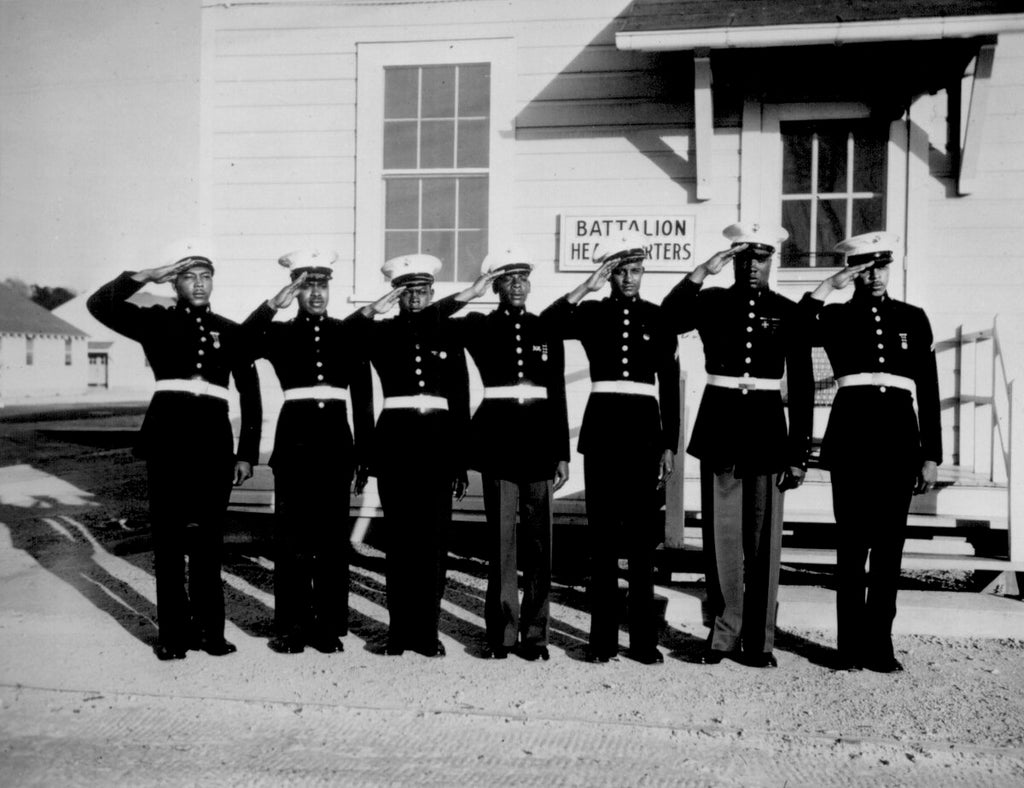For most Marines, there is a constant drive to reach the battlefield, to fight and to win. On August 26th of 1942, a group of recruits would prove there was a battle being fought that was just as important before they ever set foot in the field.
President Franklin Delano Roosevelt issued a presidential directive in 1942 that allowed African-Americans to join the United States Marine Corps. Like many stories of segregation, the idea was not immediately accepted by recruiters and training staff. The new recruits weren’t allowed to train with their fellow enlisted on account of the color of their skin. Instead, they were sent to Montford Point, North Carolina. Ivor Griffin was one of these strong men that fought what the Pittsburgh Courier labeled the “Double V Campaign.” This stood for “Victory at war over enemies from without, and victory at home against the enemy of prejudice within.”
Griffin joined the camp in only its second year of operation shortly after graduating high school and working as an apprentice at the D.C. Navy Yard. Upon signing up for the selective service, his stepfather gave him a stern warning. “Watch yourself,” he told Ivor. “They’re known to hang black men down there.”
Restrictions still allowed no more than 10 percent of a units troops to be African-American, but during the war the numbers would come nowhere near that amount. Part of that would likely be the rumors of the experience black recruits would endure before being assigned. Griffin remembers downtown Jacksonville, at the time having less than 1,200 occupants, was divided by a raised set of railroad tracks with all white townspeople on one side, and a small number of black families on the other. It would be nearly four months before Ivor Griffin was granted liberty and was able to explore beyond the gates. Locals were beyond resistant to the idea of seeing a black man in uniform and many closed their doors on sight, including bus and train stations. If the only fight was against the local civilians, things might have been easier for Griffin and his fellow black recruits, but accepting them into the program was something their fellow white Marines weren’t ready for either. For months, disagreements, disputes and brawls erupted between the racially charged groups of Marines. It would take time living and working together before there would begin to be some comradery between the two.
“Honoring the past, even if it was segregated, can help people appreciate the present,” says Montford Point Marine Association President, Forest Spencer Jr. “Segregation is over, all Marines are forged through Parris Island, San Diego or Quantico. Now my objective is to quench this thirst for knowledge.”
Griffin tells that discrimination was a big part of his life both inside the Marines Corps and as a civilian. For many years, he’d live with resentment. Now in his 90’s, Ivor has a new view of the past. “This is a new era – that’s all done now,” Griffin explains. “I’m a full man now. I’m now whole and I don’t hold prejudices against anyone.” Griffin left the Marines after the war for a short time, but retuned to fight in the Korean war serving during the blockade of Cuba during the Cuban Missile Crisis.

